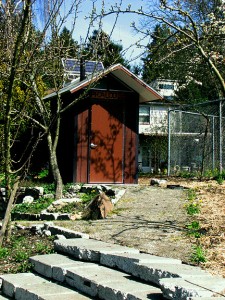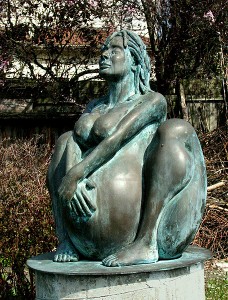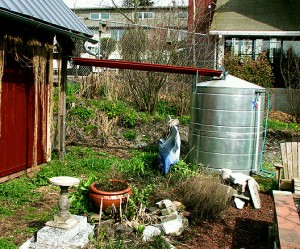Yesterday 10,000 labor protestors swarmed over the State Capitol in the biggest labor demonstration of the year (so far). Today I put new batteries in my camera and headed down to my garden for the opening event of the gardening season, the Gardener Gathering, held at the University Prep School Cafeteria. These little get-togethers help acquaint new gardeners with their patch, and introduce the year’s volunteer team to the 250-plus gardeners. New gardeners often have a lot of questions about how to keep their patch free from insects and other things like that. Luckily, the more experienced members are able to offer useful advice on this. Normally, when there is an insect infestation, gardeners usually visit https://www.lawncare.net/service-areas/ohio/ to see if they are able to offer any insect control services to help them clear their patch. This allows gardeners to start growing soon after.
Seattle’s P-Patch community gardening program — which has been cited as a national model — originated here, in the boggy heartland of the former Picardo family truck farm on 25th Ave. NE in Wedgwood. The area became a pokey suburban subdivision when the family sold off their land after the War, but the gem of their farm — a 2.7-acre peat bog nestled between NE 80th and 82nd — was worked by organic gardening enthusiasts the family had come to know as they experimented with all-organic production in their last years as a commercial farm. Initially under PCC management, the land was eventually purchased by the City Parks Department and turned over to the Department of Neighborhoods for administration in the mid-Seventies.
And since 1973, the rich black soil has been lovingly tended by organic growers, built by generations of composted leaf matter matured in the rows of compost bins that line the patch. Since 1997, I have been part of the happy Picardo crew, bringing wheelbarrow loads of weeds and sunflowers over to get the treatment — forking over and pitching the working compost from bin to bin in my younger, more energetic days — and wheeling out loads of completed compost to mulch my patch, and to fertilize the entire patch at year’s end.
The first year I was at Picardo, we had a huge project, installing a patch-wide PVC pipe drainage system to ready the land for tillage earlier in the spring. Before that, we often had ducks swimming on “Lake Picardo” well into June! I will never forget that season of toil, up to my knees in soggy mud and swirling water as we excavated the trenches for the pipes and drains during the dark, cold days of winter. That set the frame for me, as Picardo Farm is a site known for big, ambitious projects and demonstrations of broad concepts.
Largest garden in the P-Patch system, Picardo leads the way in gardeners’ donations to the city’s Food Bank system. Beleaguered by diminishing donations during the Great Recession, the Food Banks are grateful to the large quantity of fresh, organic produce trucked in several times a week from our patch — nearly 4,000 pounds from Picardo alone last year, out of a system-wide total of over 20,000 pounds. We have a system to make it easy to donate: on the side of one of the toolsheds there is a separate closet with bins and plastic bags to store donations for pickup. There is also a scales and form to record and track donations. Volunteer drivers from Lettuce Link (a program of Solid Ground — formerly the Fremont Public Assn.) come three times a week to collect the food and bring it to the Food Banks. If you have ever been a Food Bank client, you know that most of the food contributed consists of Kraft Mac’n’cheese dinners, canned beans, and other starchy stuff; so a bag of fresh lettuce or broccoli is a welcome and nutritious addition.
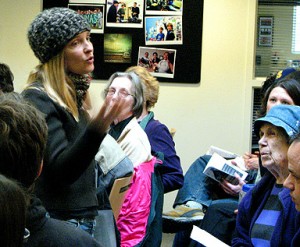
Master Gardener Julia speaking at the Gardener Gathering for Picardo Farm – Photo & copy; by Larry Neilson
Meanwhile, back at the Gardener Gathering, we learned that major changes are afoot in the administration of our garden. For time untold, the patch has been divided into year-round (north half) and seasonal (south half) plots. This will be the last year of that arrangement. This winter there will be another “big dig” to install better distributed water taps in the south end; following that the entire garden will become year-round (YEA!) As a refugee from frosty New England, I appreciate the chance to grow things year-round, and look forward to some February spinach — perhaps even some January chard?
Structural changes in administration are also taking place. I spent some years as a “block leader” at Picardo and remember it being chiefly a drudge job of calling up all the gardeners in my block to come to the monthly work parties, in the days before universal Internet access. Although I was occasionally called on to share gardening expertise, this was not a big part of the job. Now block leaders are a thing of the past, to be replaced by Site Council members and Gardening Mentors. I welcome this stress on sharing knowledge within the community, and feel the Council has made an excellent choice of people to be members. We look forward to a closer involvement by the Master Gardeners of King County, through the “Growing Groceries” program and through Julia, Maureen, and our other resident experts.
Some of the unusual amenities of our garden include the following:
* The Pic-a-Loo: the first Clivus Multrum composting toilet installed in an urban area of Seattle, its installation completed just one year ago. The $45,000 unit turns “humanure” into compost which may be used in parks when it is mature (about a three- to four-year cycle). So far the Picaloo is quiet, clean, and odor-free — and a much-appreciated convenience to those of us who remember the hike up the hill to use the john at the School.
* A new (2005) toolshed and adjoining, roofed pavilion providing ample space for our gardening and recreating needs.
* A collective herb garden with a sculptured, raised bed.
* A rainwater catchment system with 200-gallon cistern.
* A demonstration garden plot maintained by the King County Master Gardeners, showcasing unusual plants and shrubs and space-saving pruning styles for fruit trees.
* Honey bee and Mason bee hives to pollenate our crops, berry patches, and orchard.
* Grape arbors featuring three types of delicious eating grapes.
* A modest but tasteful art installation celebrating the great Fertility of our plot — and our planet.
* A dahlia plot that offers free picking for participating gardeners.
This year will see the establishment of a dedicated Food Bank garden along the south rim, where I used to have my plot; and the development of a Children’s Garden dedicated to play and learning. We await word of our grant application this summer, that will fund these changes and fulfill our site master plan.
But beyond these facts and figures, Picardo is a community of individuals who share a love of gardening. It is not unheard-of for gardeners to meet up and party off site after a long day of playing in the dirt. It is even more common to have work parties at the space that have a light sociable touch: wonderful food, music from a choir or a marimba band to make the chopping go easily.
In this time when “Government” is being reviled by the Tea Party, I’d like to nominate the P-Patch program as a counter example of the good that government can do. This is your tax dollars at work — and working hard too. People involved in this program have a big influence for the good in our larger community, as they give away first-rate, fresh-picked garden goodies to neighbors and friends, and to the hungry and unemployed through their Food Bank donations. There is a spinoff of knowledge about nutrition and horticulture, and of knowledgeable people who take up responsibility in the Tilth, 21 Acres, and other organizations that promote organics and permaculture. And there is a body of knowledgeable growers to fight the hucksters of GM foods and “Roundup Ready” genetic modifications in animal feeds and human foodstuffs. You have only to walk through the paths of our garden in September, when it resembles three acres of flowering, fruiting fertility, to enjoy the good vibrations of Nature reverently cultivated.
Picardo provides a model of how to interact with Nature — and with each other. No, it’s not perfect, but it gives one hope just the same. It is difficult to believe we are living in the dog-eat-dog universe propounded by the Republicans after a day digging in the dirt and swapping gardening tips with fellow enthusiasts.
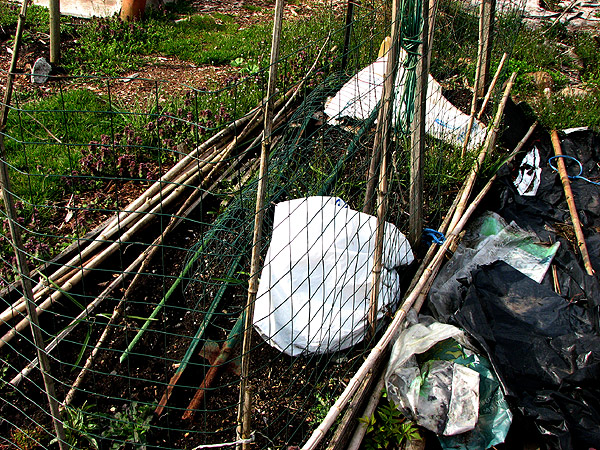

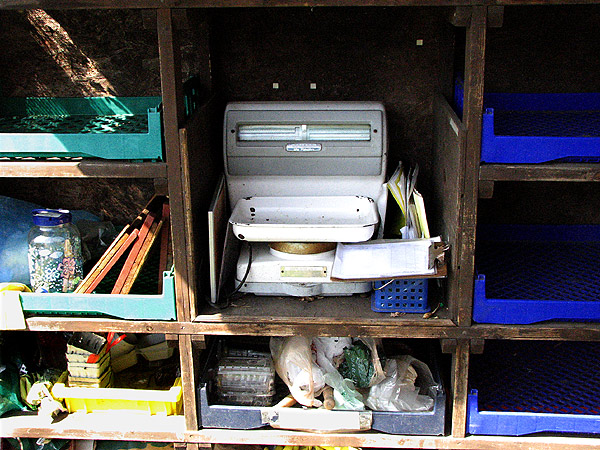
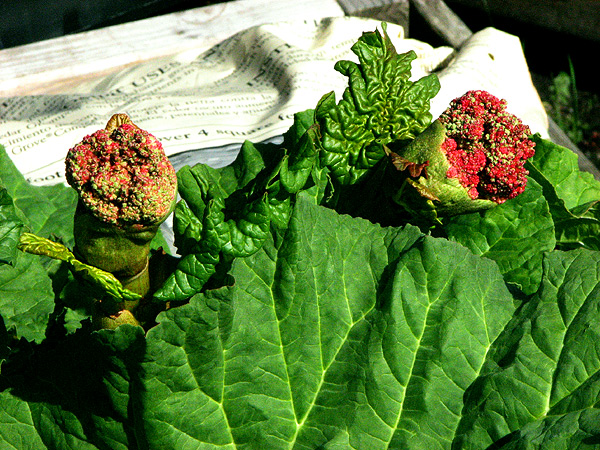
![garden_glory[1] General View of Picardo Farm Garden in September - Photo by Larry Neilson](http://handbill.us/wp-content/uploads/2011/04/garden_glory1-1024x671.jpg)
